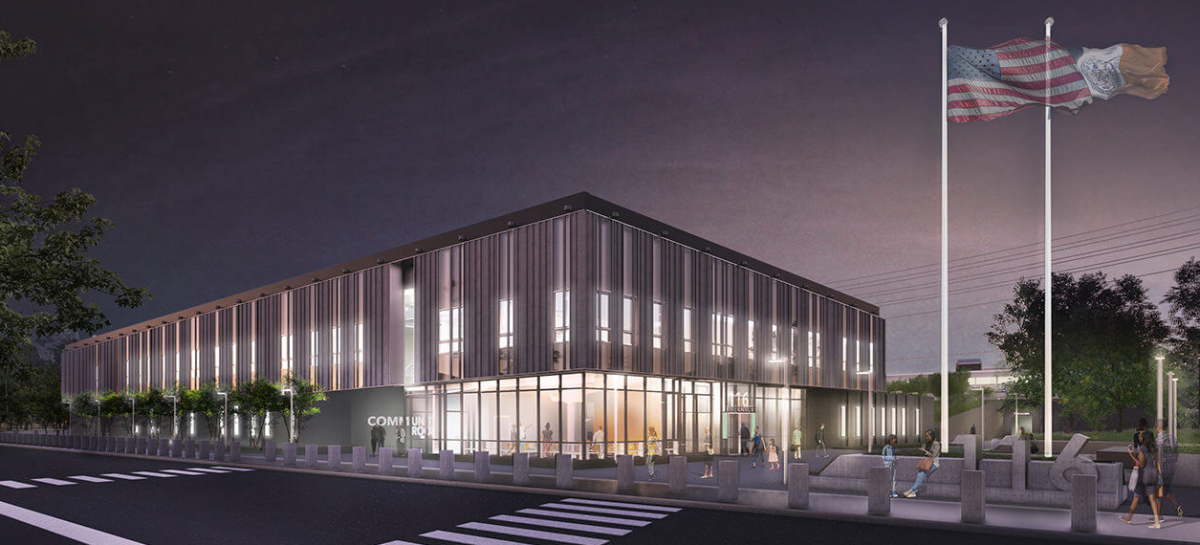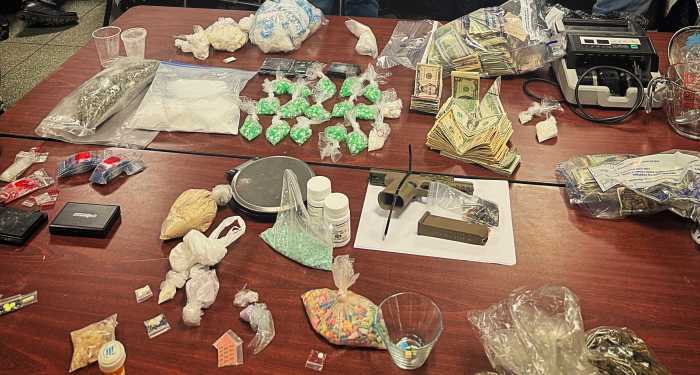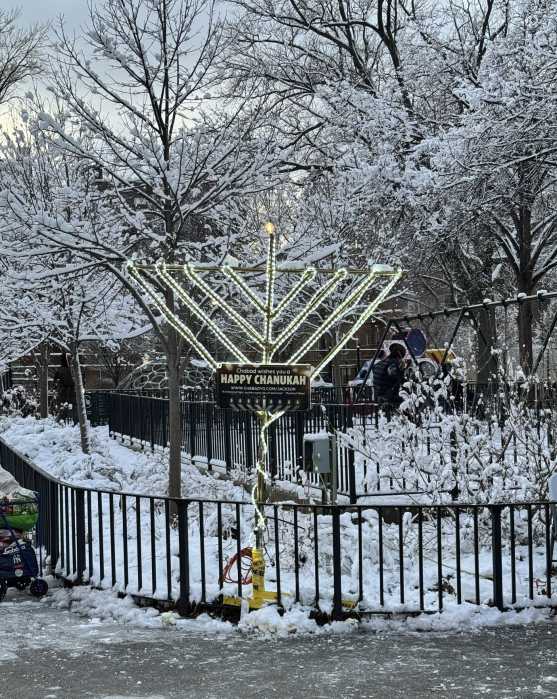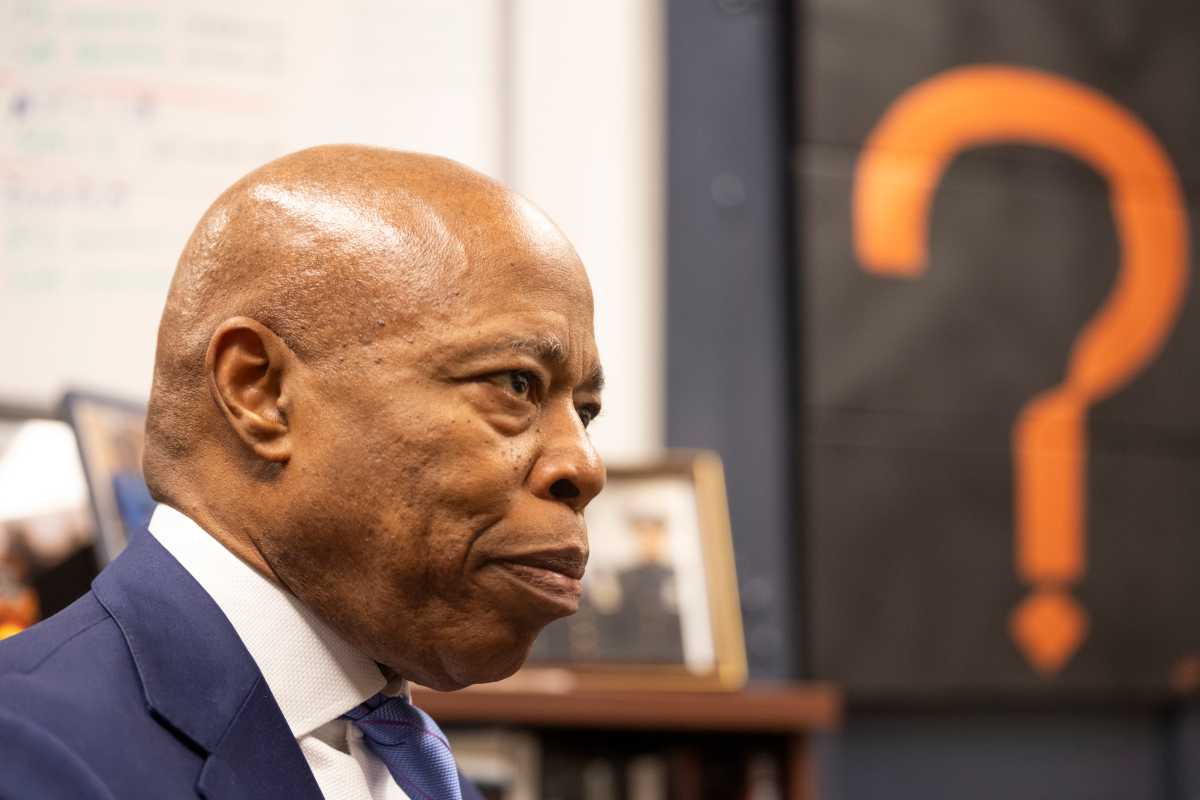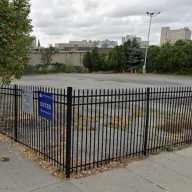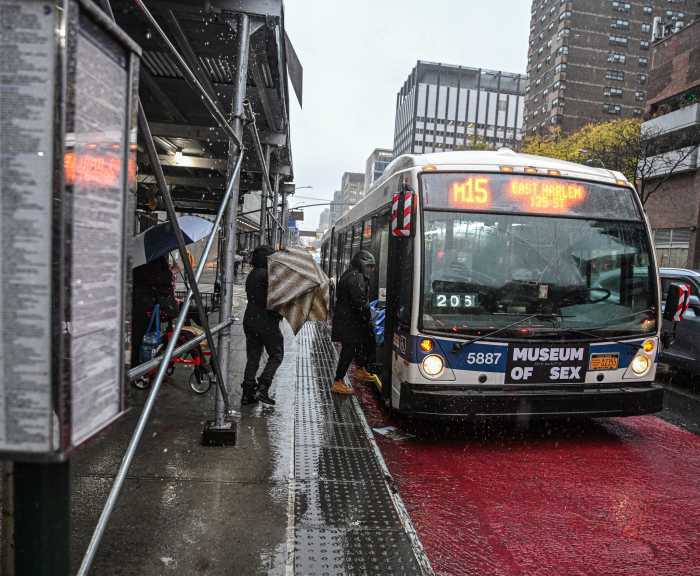After 40 years of advocacy and hard work, southeast Queens residents can rejoice as Mayor Bill de Blasio announced on Tuesday, April 20, that funding for the new 116th Precinct and community center has been restored to the city’s capital budget.
The long-awaited 116th Precinct and community center — that will serve the neighborhoods of Rosedale, Springfield Gardens, Brookville, Laurelton and the southern portion of Cambria Heights— will be fully funded, according to de Blasio, as he unveiled his Safe Summer NYC initiative during a press conference.
“These are things that the community has said will improve the quality of life and will allow the community to literally get what they need. This fight has been going on for decades, and once and for all, we will be able to provide the support for the community in southeast Queens,” de Blasio said.
Plans for the precinct include a street plaza and a community center with a food pantry to help feed families amid the pandemic. Southeast Queens community leaders commended the mayor for addressing the issue by restoring funding to the capital budget.
Referencing the struggle that started in the 1970s for the creation of a new police precinct amid public safety concerns, Congressman Gregory Meeks said it is “indeed a day of celebration” for the residents of southeast Queens.
“We want this new police precinct to be a part of this community and that’s why it was essential to have a community center attached to it. We will have that inter-exchange and engagement so that we can work closely together,” said Meeks, who created the 116th Precinct Task Force when he was elected to the state Assembly in 1992.
Newly elected Council member Selvena Brooks-Powers said the announcement is a “major victory” for her district’s civic organizations that have fought for equity, city resources and calls for the creation of a new precinct.
“This group has spent countless hours fighting for much needed and deserved equity. They have dedicated many hours towards strategizing and organizing around the need for a new precinct that would help to reduce response times,” Brooks-Powers said.
For Brooks-Powers, the creation of the 116th Precinct represents more than merely a station house — it represents equity and also a step toward a more progressive and inclusive approach to community safety, she said.
The 116th Precinct was approved by Community Board 13 in October 2018. In its 2019 statement of community district needs and budget requests, the board cited youth and children’s services as one of its three most pressing needs, citing the fact that “there is no community center in QCB 13 for our young people to socialize and exercise.” The Roy Wilkins Recreation Center will not fulfill that need, as it’s located with Community Board 12’s district.
The neighborhoods that would have been covered by the 116th Precinct are currently being policed by the 105th Precinct — the fifth largest precinct in the city, covering 354 miles of roadway — which has set up a satellite office on North Conduit Avenue next to the Rosedale Long Island Rail Road station. The satellite precinct has been in operation at a limited capacity since 2007.
The 105th Precinct posed consistent challenges to fully serving neighborhoods in the southern half of its jurisdiction, according to Brooks-Powers. This resulted in long-standing disparities, response times and safety of families in the district.
“The new 116th Precinct requested by the community since the 1970s was designed and slated to remedy this gap. It has been a long time coming to this point — a lot of frustration and loss of funding in last year’s budget,” Brooks-Powers said.
According to the 116th Precinct Community Task Force, which brought together over 20 local civic organizations in southeast and northeast Queens for unified action, funding for the precinct was removed from the capital budget in June 2020.
Instead, funding for the precinct was allocated to the development of a new Roy Wilkins Recreation Center in Jamaica.
In a statement following the mayor’s announcement of the budget restoration, the task force said the new precinct will set the standard for community policing for the world.
The association also expressed gratitude for the outpouring of support from elected officials led by Meeks, Brooks-Powers and Borough President Donovan Richards, among other elected officials. They also lauded the mayor for bringing the plan to fruition.
“We thank the mayor for taking this very timely and critical action that will fill the void in police protection for the communities of southeast and northeast Queens and help stem the tide of rising crime,” said Bess DeBetham, co-chair of the Task Force.
Mark McMillan, district manager of Community Board 13, said the precinct has been the board’s number one priority in its District Needs Statement for over 20 years, for the communities in the largest community board district in Queens.
“The 116th Precinct will provide the necessary presence for both law enforcement and community partnership. Its design includes a community room where residents and community groups may gather to discuss and share the various issues of the day,” McMillan said in a statement to QNS. “Additionally, the location will allow for more efficient response times.”
As a former council member representing the district and leading early support for the construction of a new precinct, Richards said the victory is a win-win for all.
“This is where we need to go when we talk about policing in the 21st century and today we are achieving that together,” Richard said. “Everyone who made this possible — all of our community board members who really fought and labored hard to make sure we can reach this day, and this would not be possible without you. This is about ensuring that we are modernizing policing and moving to a different direction.”

